Surveying the Deep
 June 7, 2013
June 7, 2013
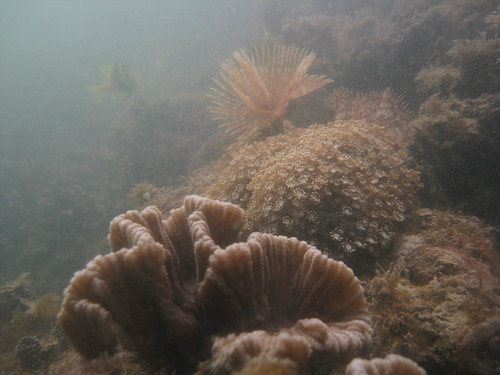
The first Comprehensive Marine Biodiversity Survey began in 2011, but this is the first time that diving is included as a survey method! Diving wasn’t included in the surveys conducted through 2011 and 2012 because the habitats that comprised mudflats and tidal shores along the Johor Strait, were not suitable for diving. This years Southern Expedition will explore Singapore’s Southern Shores of which Pulau Hantu is a part of! The Hantu Blog is thrilled to finally be a part of this expedition – the first of its kind in Singapore!
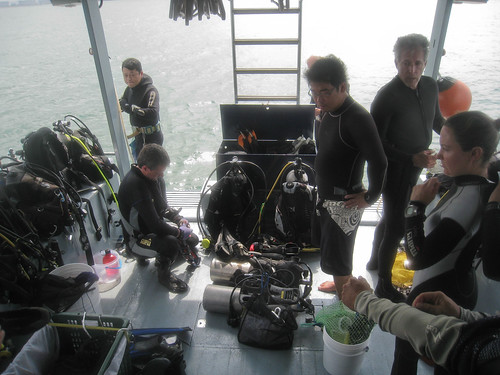
Apart from getting to dive in areas that leisure divers do not frequent, it was a real eyeopener to be diving with a diverse group of scientists from around the world who have such varied interests and expertise! For this first dive, we had (from left) Dr Lin Chia-wei (Taiwan) who specializes in squat lobsters, Dr Sammy de Graves (Belgium) from Oxford University Museum of Natural History who has an interest in caridean shrimps, Dr Daisuke Uyeno (Japan) who’s focus is on parasitic copepods, Dr Charles Messing who’s been studying crinoid biology for over four decades, and Oxford University PhD Candidate Catherine Head who’ll be studying the species diversity upon and within coral rubble. Others not in the photo were Dr Zeehan Jaafar (NUS/Smithsonian) who studies gobies, Dr Tan Heok Hui an ichthyologist with the Raffles Museum of Biodiversity Research, Zarina Zainul who’s a PhD Candidate at NUS, and Associate Professor Dr David Lane who studies the biodiversity of echinoderms.

Our first dive was to Semakau. My first task was to head down into the coral rubble area to collect a basket-full of coral rubble. The water was very turbid making it very hard to work and communicate as a team because you can hardly see your teammates! But somehow we all managed to figure out what it was we were supposed to do, thanks to a clear dive briefing that was given before we descended into the water. While foraging around for coral rubble, I came across several Glossodoris atromarginata nudibranchs (above)!
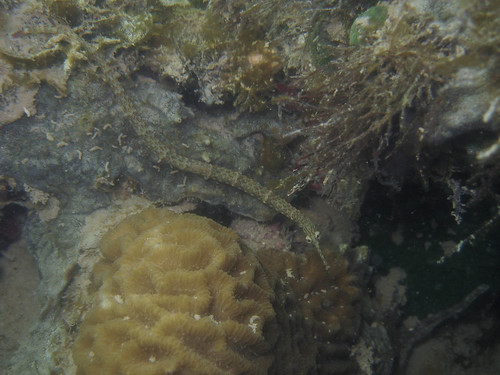
I also encountered an Orange-spotted pipefish! This one was looking right, straight at me and the camera!
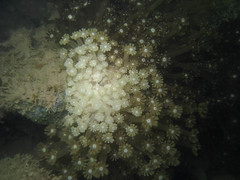
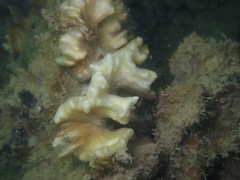
I also noticed some coral bleaching amongst the Goniopora and Pectinia coral.
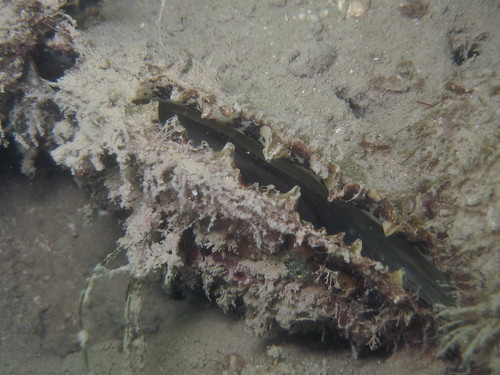
I noticed one of the scientists collecting a heap of Pen shells (above). I wondered what made them so interesting, and after asking some questions I found out that it wasn’t the Pen shells that were so interesting, but a little critter called a Pea crab that lives within the Pen shell! These cryptic creatures spend their lives within the Pen shell, but also in other bivalves like mussels.
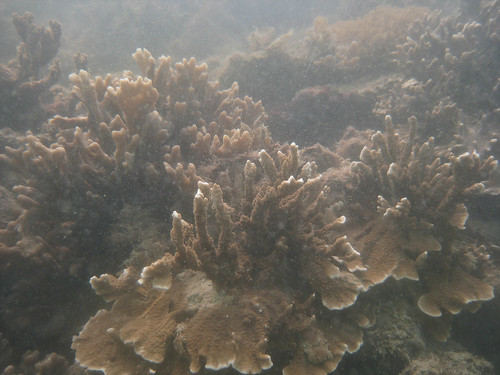
There were also some beautiful Merulina coral colonies at Semakau. At the end of the dive, I asked Dr Charles Messing what he thought of his first dive in Singapore waters. He said, “There’s so much silt here but there’s so much live coral. It’s impressive!” I couldn’t help but agree!

After the dive at Semakau, we headed back to St. John’s Island, the base camp of the Mega Marine Survey. As our boat pulled up along the jetty, volunteers with trollies rolled right up to our vessel to pick up the heavy haul of coral rubble and specimens that we had collected from Semakau. The specimens are then taken to an area where they are sorted, labelled, and photographed.
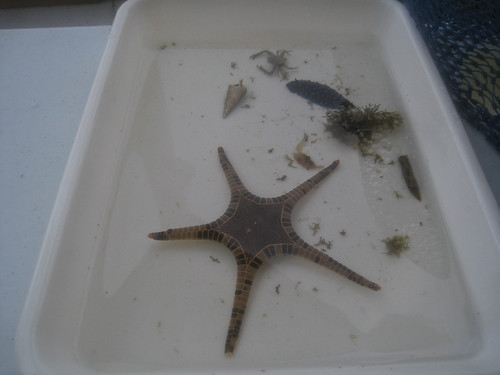
It was really inspiring to see how curious and excited people were when the specimens came in. Though the scientists each have their own focus and interests, they were so intrigued by the finds of others and were asking many questions! I noticed Dr Daisuke Uyeno take out his camera to photograph an Icon Seastar. I asked him if he had seen this kind of seastar before. He said no, and added, “this is a very beautiful seastar.” It’s nice to know that despite having dived all over the world and seen a tonne of beautiful and interesting creatures, scientists like him can still encounter something new and special here in our humble waters.

For the second dive we headed to Lazarus Island. I have not dived at Lazarus Island for a few years since, so I was looking forward to getting reacquainted!
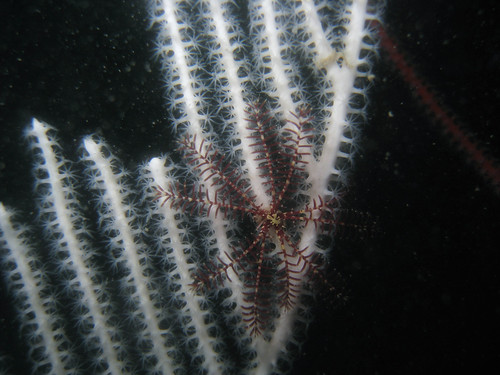
There were plenty of crinoids on the sea whips.
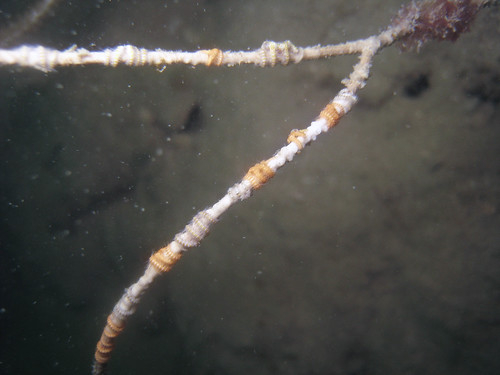
Other things on sea whips included brittle stars, a kind of sea star, that is more active during the night.
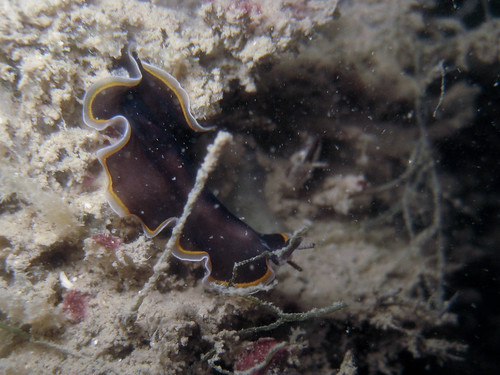
There were also some beautiful flatworms.
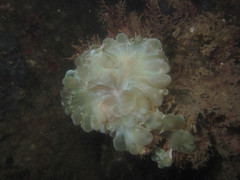
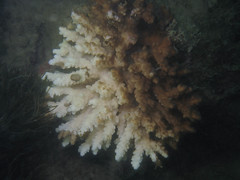
And unfortunately, more corals bleaching too.

I also noticed a bizarre algae I had not noticed before. I managed to identify this later as Caulerpa serrulata, also known as Cactus tree alga. It can be found throughout the tropics and is an important food and energy source on the reef.
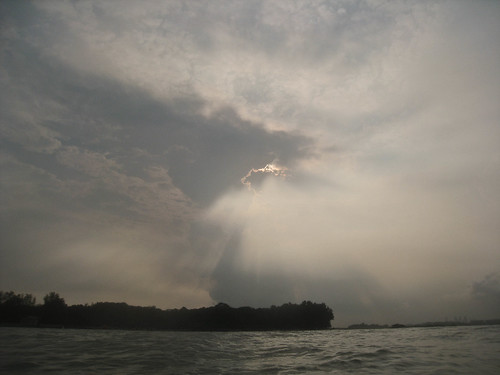
Considering the underwater visibility was no more than half a meter and that we lost our buddies and, occasionally, our equipment all the time, we managed to find quite a few cool things during the dives and it was not a bad day diving! The scientists spotted way more things than I did, and I came to realise that some of the things I find common on our reefs seem to hold a lot of intrigue for the visiting scientists!
Here are the Tweets I posted from today’s expedition:
Arriving at St Johns Island, where we will be based for the expedition. Wonder what we will see today! http://twitpic.com/csid44
Our scientists all geared and ready to explore! Today we have 5 scientists from Japan, UK, and Taiwan http://twitpic.com/csih2d
This rig looks like its been to through some real serious adventures! http://twitpic.com/csijvf
Collections from the first dive get labelled, sorted, and sort of identified #megamarine http://twitpic.com/csjq1m
Scrubbing coral rubble is back breaking work! #megamarine http://twitpic.com/csjyth
Fishes, flatworms and sea slugs #megamarine All lined up for photo taking. http://twitpic.com/csjz07
A huge Pen shell! #megamarine http://twitpic.com/cskrmn


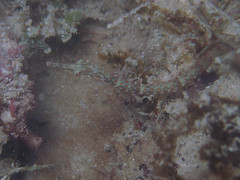
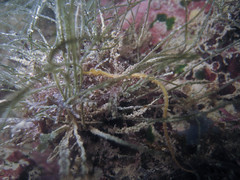
 Posted in
Posted in 



 content rss
content rss
July 31st, 2013 at 6:43 am
Hi Debbie – I’m not sure if we’ve crossed paths during any CMBS outings; I volunteered for both the Northern and Southern expeditions. I wrote up the N Exp for the Nature Society’s Nature Watch May edition (Ria mentions it here, http://www.megamarinesurvey.blogspot.sg/2013/05/where-none-have-gone-before-on-day-2-of.html#more), and am now writing up another article about the S Exp for the Singapore American newspaper (http://www.aasingapore.com/singapore-american-newspaper/). (Neither publication pays its authors!). I am going to use some of my, Rene Ong’s, and Ria Tan’s photos, and would like to know if I could include any of yours. Right now I’m thinking of the “Crinoid on sea whip” and the boat of divers going to Lazarus, but perhaps will try for others too.
Would you agree to this use of your photos? If so, of course you would be credited – Debbie Ng, or Hantu Bloggers, or ???.
Thanks!!!
Melissa
August 4th, 2013 at 1:07 pm
Dear Melissa, pls email info@hantublog.org for information about using our photos. Thank you!